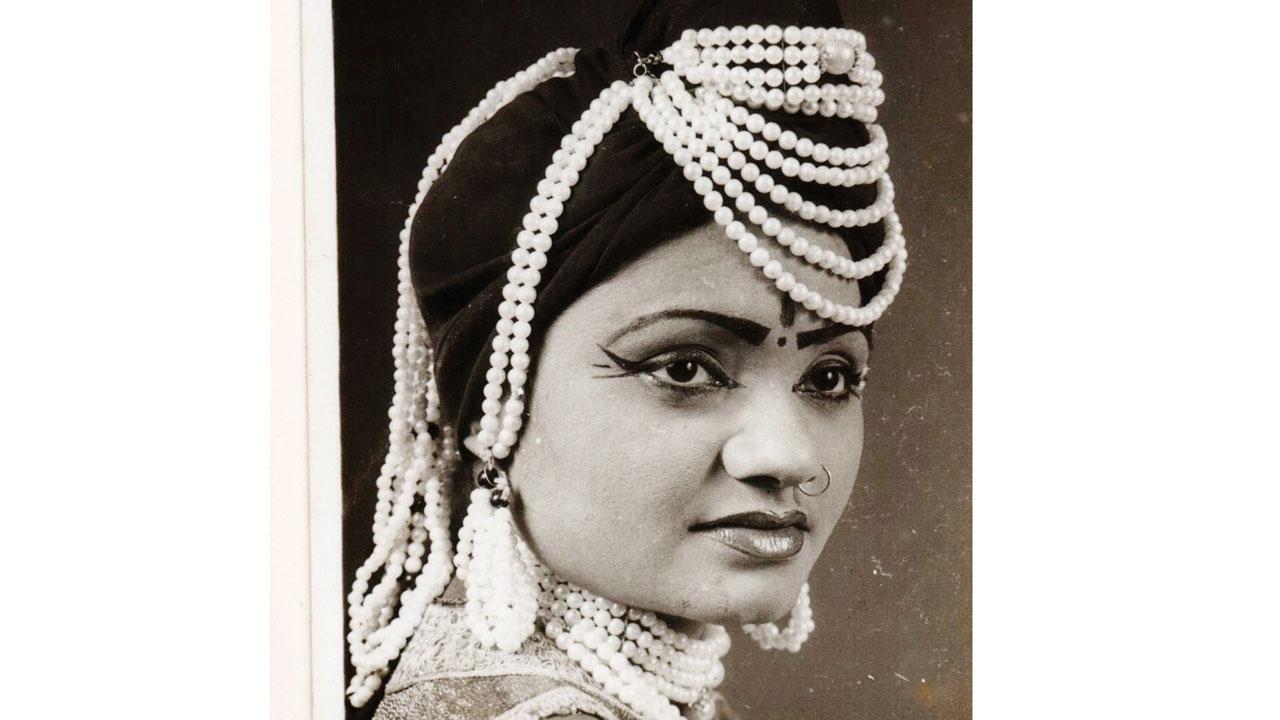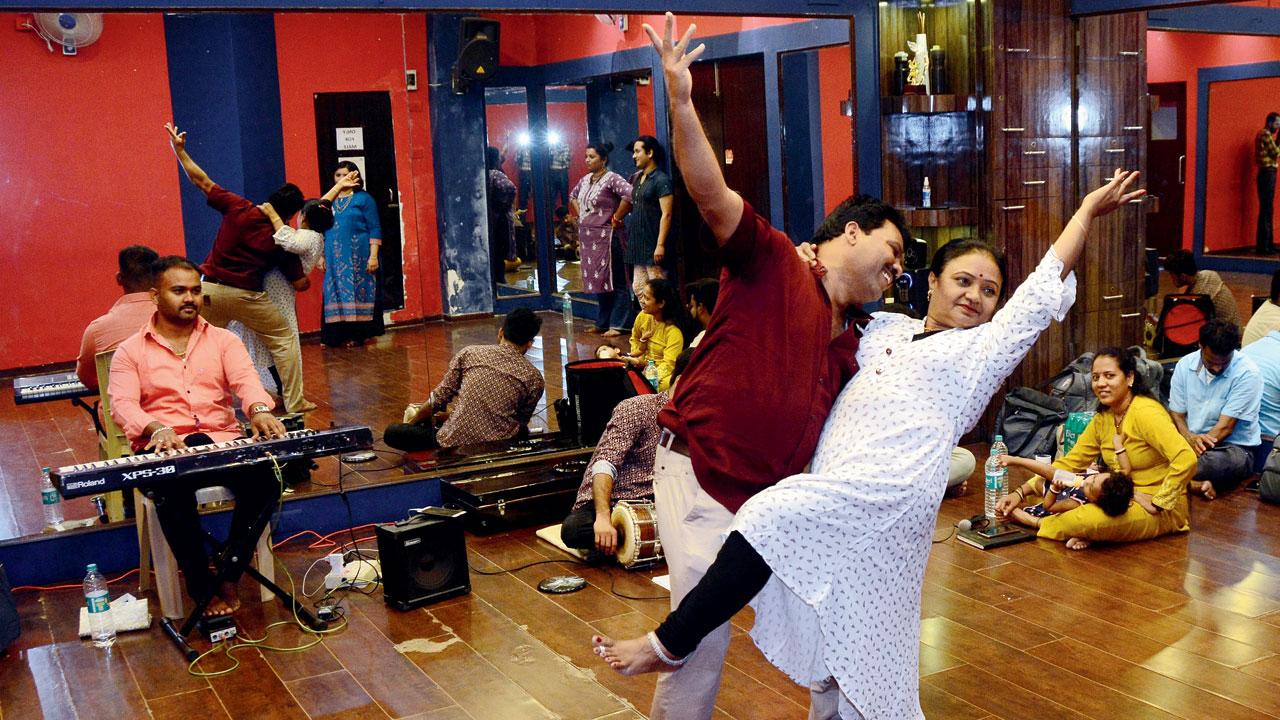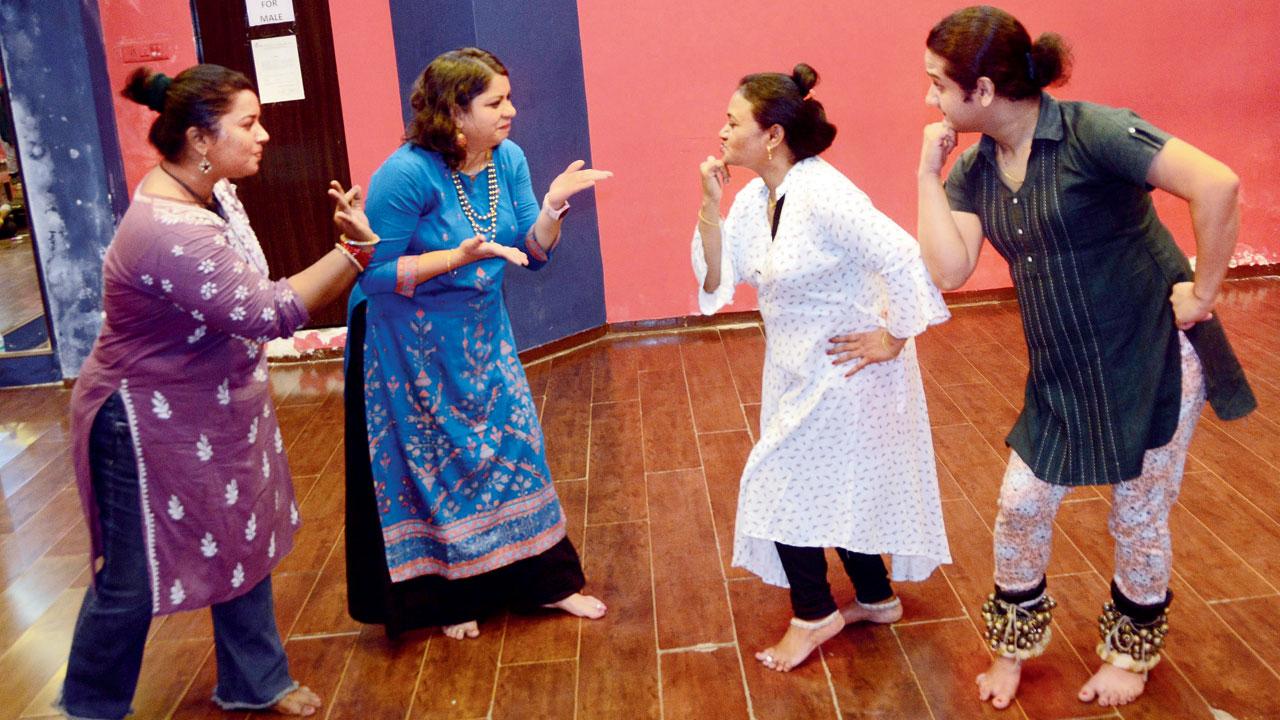A new production that’s travelling to Serendipity Arts Festival in Goa traces the journey of the form through the lens of gender, politics and cultural developments

An archival image of tamasha artiste Seema Pote. Pic courtesy/Pote Family Album
Lavani amcha jivan aahe,” believes 49-year-old Seema Pote, whose parents were tamasha artistes. Pote, who was born in a tamasha tent in Solapur district, learnt the nuances of lavani from her mother, Shantabai Savlaram Kale. Having danced to the rhythm of the dholki since she was 11 years old, for Pote, lavani is more than just art — it’s a way of life. The folk artiste, along with other lavani performers, will weave together the journey of the art form, from its early days in the 1800s to its modern avatar in theatre-maker and documentary filmmaker Savitri Medhatul’s upcoming production, Lavanya Katta. The documentary theatre piece will premiere at the Serendipity Arts Festival (SAF) on December 17.
ADVERTISEMENT

Sudhakar and Seema Pote during rehearsals
Medhatul is one of the creators of the popular Sangeet Bari production, which explores the lives of lavani artistes associated with the eponymous tradition. “A few years ago, SAF commissioned a show called Lavani Queen. And for this edition, too, they asked me if I could stage the show. Actor-director Quasar Thakore Padamsee, who has curated the theatre section, encouraged me to think of a new production,” Medhatul recalls. The idea of Lavanya Katta, she says, is rooted in the evolution of lavani through different social, cultural and political changes. “With this show, I want to unpack the idea of who is a lavani woman or rather, who is a lavanyavati? I am exploring this question through the lens of the different styles of lavani, gender and history,” she reveals.
During the 90-minute show, Medhatul will be joined by Pote and her husband, Sudhakar, who hail from the tamasha tradition, along with Akanksha Kadam and Akshay Malvankar, practitioners of the banner show tradition of lavani. “While Seema tai inherited the art form, I am someone who took up lavani, thanks to my research and aptitude for dance. Akanksha, meanwhile, became lavanyavati when banner shows opened up. At the same time, because of Bin Baykancha Tamasha [an all-men lavani performance], the form opened up to performers like Akshay and to the queer community, although earlier, in the 19th century, there was the tradition of nacha [when men used to dress in women’s lavani costume],” explains Medhatul.
The performers, through their own understanding and associations with the art form, will chart the way the idea of a lavanyavati has transformed since the 19th century. “We’re exploring why and how different performers got connected to lavani, including socio-political changes in the city and the state. For instance, because the mills in Mumbai shut down, tamasha troupes stopped coming to the city, and that’s why banner shows started taking place,” she illustrates.
 (From left) Akanksha Kadam, Savitri Medhatul, Seema Pote and Akshay Malvankar rehearse for Lavanya Katta in Vashi. Pics/Sayyed Sameer Abedi
(From left) Akanksha Kadam, Savitri Medhatul, Seema Pote and Akshay Malvankar rehearse for Lavanya Katta in Vashi. Pics/Sayyed Sameer Abedi
The production will also examine modern approaches to lavani vis-a-vis feminist projects such as Consent Lavani and Aika To The Baika created in collaboration with Agents of Ishq. A whole lot of song, dance and fun will blend with projections of archival pictures of the Pote family, footage of Medhatul’s 2006 documentary on lavani, and videos from Agents of Ishq. The director hopes to bring the production to Mumbai soon.
While speaking about her love for the form, Pote tells us that anyone can relate to lavani. Although people have a misconception that it’s vulgar, she asserts that lavani is just a medium to express what’s in our hearts. As Kadam sums it up: “Lavani is bold, not vulgar.” She, along with Medhatul, will helm an hour-long interactive workshop on December 18, a day after their show. “This performance is our tribute to lavani,” Kadam signs off.
On: December 17; 12 pm and 2.30 pm
At: Serendipity Arts Festival, Goa
Log on to: serendipityartsfestival.com
 Subscribe today by clicking the link and stay updated with the latest news!" Click here!
Subscribe today by clicking the link and stay updated with the latest news!" Click here!







